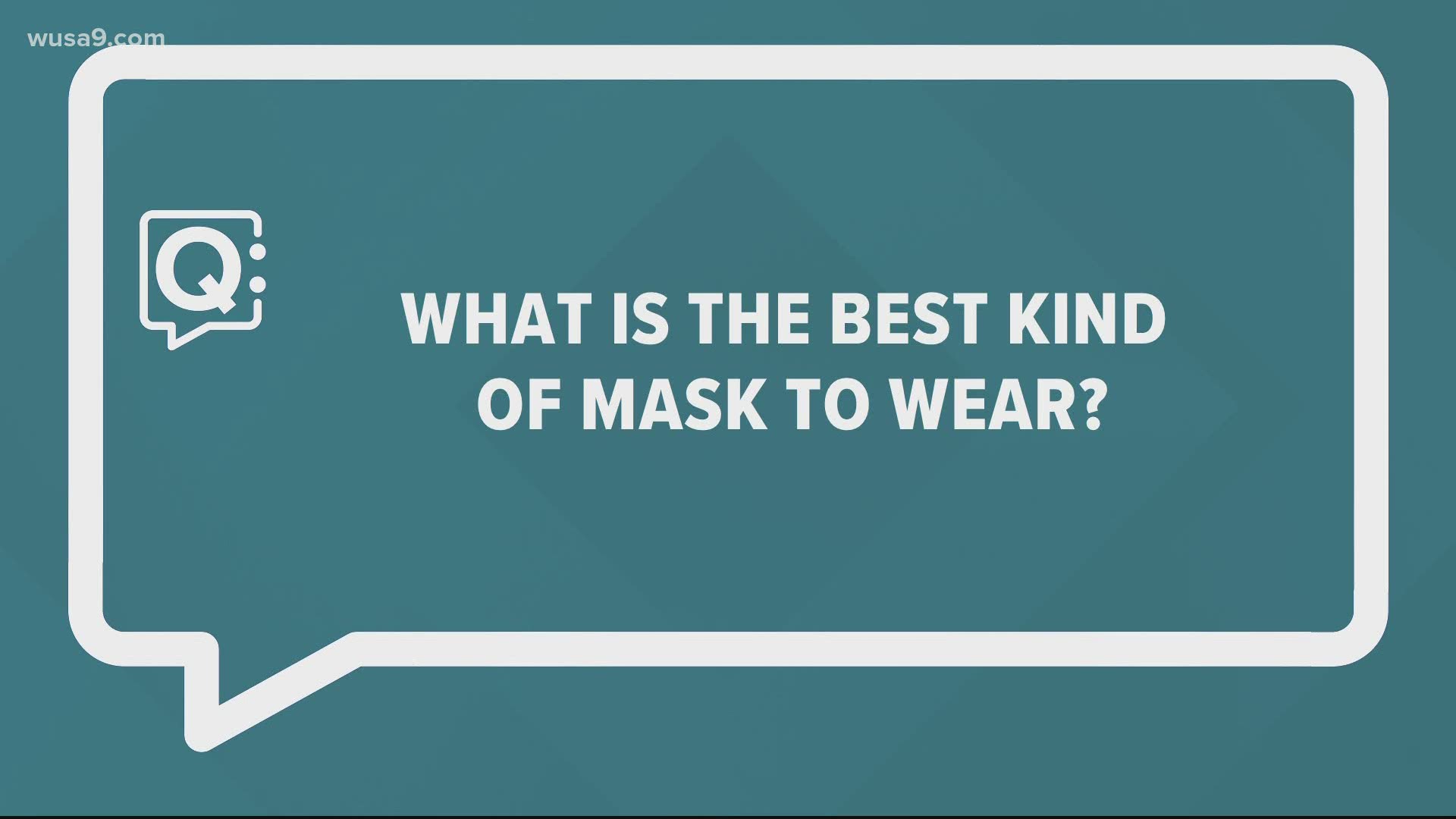WASHINGTON — With new variants circulating globally from the U.K. to Brazil and South Africa, the Q and A team is checking back in on masks. Do we need to improve them?
We went to an expert in the Johns Hopkins Hospital Bio-Containment Unit to learn more.
QUESTION: How do these new variants impact the importance of masks?
ANSWER: The new variants emphasize how critical mask-wearing, hand-washing and social distancing are nowadays, said Christopher Sulmonte, Johns Hopkins Bio-Containment Unit Project Administrator.
"If anything, what it shows is that our efforts that we're doing to minimize transmission are incredibly important," he said. "It's a tool that we use and a tool that we know that works."
HAVE ANY MORE QUESTIONS ABOUT WHAT YOU'RE SEEING IN THE HEADLINES? TEXT (202) 895-5599 SO THE Q AND A TEAM CAN WORK ON FINDING AN ANSWER.
Q: So given the news that the new variants are more contagious, what is the best kind of mask to wear today?
"It's not a one size fits all approach," Sulmonte explains.
It's not necessarily a mask from a specific retailer or a particular, fancy brand. Simplistic or even handmade masks will work if they satisfy certain qualities to ensure they protect the wearer sufficiently, Sulmonte pointed out.
He said it all comes down to the three Fs: fit, function and frequency.
"We want to make sure that the mask is fitted properly around your nose down to your chin with no visible gaps. That's first and most important."
The second point on the checklist is the function.
"What we mean by, function, that we're working with a multi-layer mask; multilayers as in layers that will minimize the spread of those particles that are coming out of our mouth. For example, I use a double-layer cotton mask with a filter in the middle."
Sulmonte explained the last component, frequency, "is when you wear the mask, it fits fit comfortably, and you will be able to wear it for the entire duration. We want to make sure at the end, you're going to wear that mask."
Q: Should you race to the store to buy a new mask?
Sulmonte said not necessarily, but you do want to check the masks that you already own to make sure they're living up to the best qualities.
"Check all your masks -- do they need to be replaced? Are the loops a little loose because you've worn it so much? Is the material looking faded? If you hold it up to the light, can you see through it?" Sulmonte said all of these factors could be a good indication it's time to buy another mask haul.
Due to the new variants, some experts and analysts have suggested that the public should use higher-grade medical masks, commonly known as N95s and KN95s. Although the Center for Disease Control still maintains that these masks should be reserved for health care workers, the CDC does recommend tips when it comes to spotting counterfeit versions of these masks, which have been rampant.
These include N95s or K95s that feature decorative additions, like sequins; masks that specify they are for children, as there are no specially made N95s or K95s for kids and versions of these masks that include ear loops instead of headbands.

